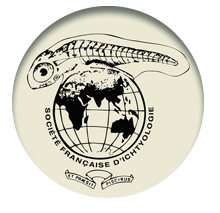Comparative cytogenetic studies of the Nototheniidae (Teleostei: Acanthomorpha) from the Indian (Kerguelen-Heard Plateau) and Atlantic (South Georgia, South Sandwich, Falkland/Malvinas, Bouvet Islands) sectors of the Southern Ocean
How to cite: Tomaszkiewicz, M., Hautecoeur, M., Coutanceau, J.-P., Bonillo, C., Dettaï, A., Mazzei, F., Ghigliotti, L., Pisano, E., Couloux, A., Chanet, B., Lecointre, G., Detrich III, H. W., Duhamel, G., & Ozouf-Costaz, C. (2011). Comparative cytogenetic studies of the Nototheniidae (Teleostei: Acanthomorpha) from the Indian (Kerguelen-Heard Plateau) and Atlantic (South Georgia, South Sandwich, Falkland/Malvinas, Bouvet Islands) sectors of the Southern Ocean. Cybium, 35(SP): 109-121. https://doi.org/10.26028/CYBIUM/2011-35SP-011
Comparative cytogenetics is a powerful tool that can be combined with molecular phylogenetics and morphological systematics to infer the evolutionary relationships among species. In this report we describe the karyotypes (including 5S and 28S ribosomal RNA gene positions) of ten species from three understudied genera of the family Nototheniidae (suborder Notothenioidei); five of the karyotypes (species underlined) are reported for the first time: Gobionotothen marionensis (Günther, 1880), G. acuta (Günther, 1880), G. gibberifrons (Lönnberg, 1905), Lepidonotothen larseni (Lönnberg, 1905), L. mizops (Günther, 1880), L. nudifrons (Lönnberg, 1905), L. squamifrons (Günther, 1880), Patagonotothen guntheri (Norman, 1937), P. ramsayi (Regan, 1913), and P. tessellata (Richardson, 1845). Furthermore, we place these species in the nototheniid phylogenetic tree by extensive sequencing of the mitochondrial cytochrome oxidase I (COI) genes, including COIs from nototheniid genera with well characterized karyotypes (Notothenia (Richardson, 1844)) and from species chosen as outgroups (the notothenioids Bovichtus diacanthus (Carmichael, 1819), Eleginops maclovinus (Cuvier, 1830), Chionodraco hamatus (Lönnberg, 1905), and the serraniform Zanclorhynchus spinifer (Günther, 1880)). The COI sequences clearly delineate all species analysed, and the resulting tree is congruent with phylogenies based on nuclear gene sequencing. We also show that many nototheniid clades (e.g., Gobionotothen, Notothenia) are supported by common derived chromosomal rearrangements, whereas the karyotypic alterations of others (e.g., Lepidonotothen) are not easily explained. We hypothesize that notothenioid diversification has been driven in part by specific patterns of chromosomal rearrangement.


